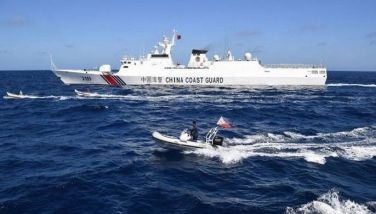Saving Taal Lake, preserving the endemic tawilis
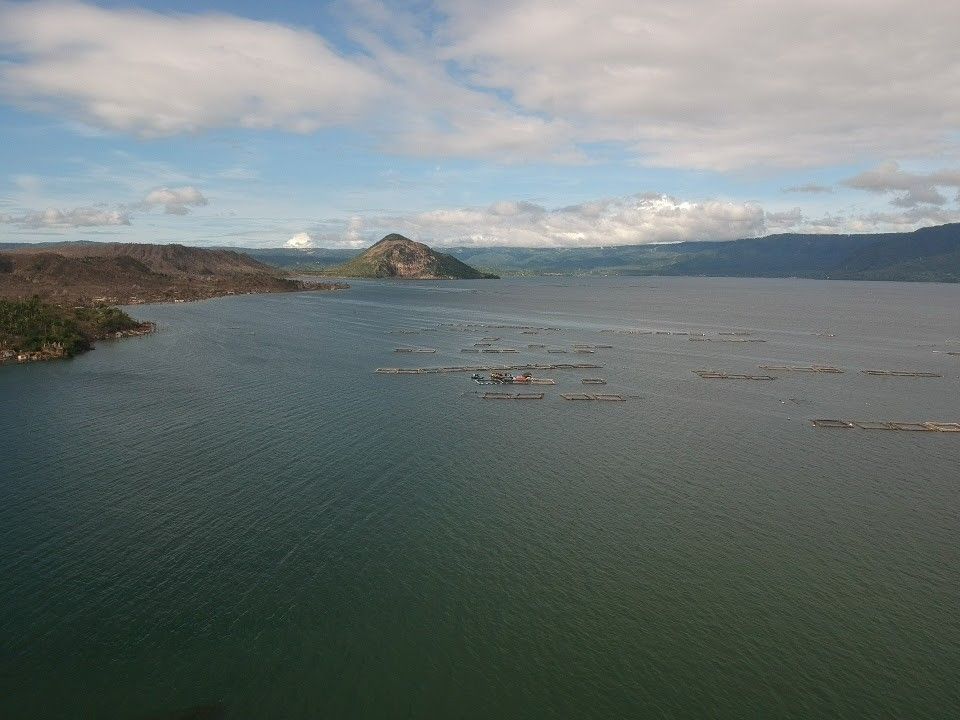
BATANGAS, Philippines — Rolly Orense, 50, has been fishing in Taal Lake in Batangas province since he was a seven-year-old boy. He is usually up at four in the morning to catch fish, mostly the tiny tawilis.
As he has been a man of the lake for most of his life, Orense knows that December is the start of the lean period for fishermen who catch tawilis (Sardinella tawilis). Fishers said that because of the cold weather, tawilis go deeper into the water, beyond the reach of their nets.
But it’s a different December, Orense said, as the catch has been abundant. The fisherman from Mataasnakahoy town said he was able to catch 30 kilograms of tawilis for two straight days—a level he has not seen during this time in previous years.
“This time last year, our catch was only enough to cover the expense for gasoline. But this month, it seems the harvest was abundant,” Orense said in an interview on December 5.
The lake is always mysterious, he said, but this year, it provides.
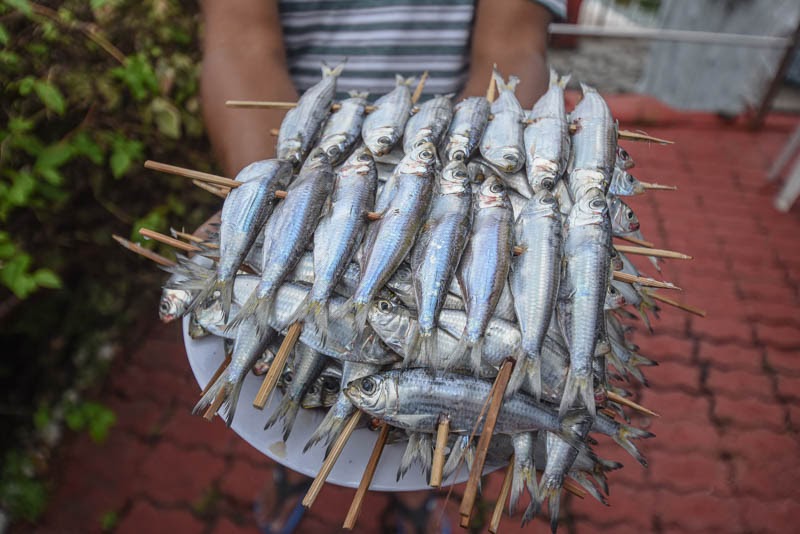
Endangered sardine
Aside from tawilis, Orense also catches bangus (Chanos chanos) and maliputo (Caranx ignobilis). But the freshwater sardine is the fisherman’s priority.
“Our priority is catching tawilis because it’s profitable. Even if your catch is few, you will still be able to sell,” Orense said. The fish can be sold by fishers at P70 ($1.46) per kilo.
Tawilis is the most dominant fish species caught in the lake, making it a staple food for lakeside towns and cities. Locals and tourists love tawilis deep fried and paired with hot bulalo.
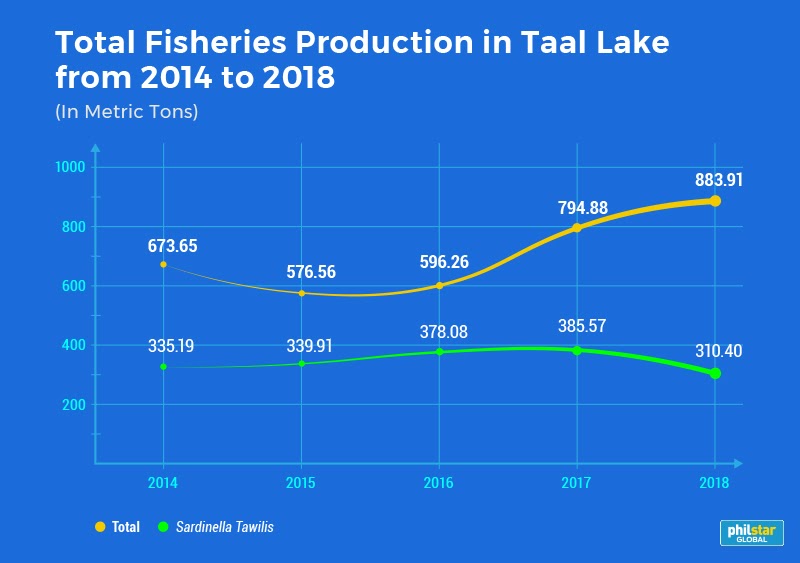
Tawilis is the only freshwater sardine in the world, and it can only be found in Taal Lake, a crater lake formed by the active Taal Volcano.
Limnologist Rey Donne Papa called it the “icon” of freshwater biology and one of the “superstars” of Philippine biodiversity.
“The unique geological [characteristics] of Taal Lake together with its active volcanism have led to the evolution of this species,” Papa, dean of the University of Santo Tomas College of Science, said.
Taal Lake used to be broadly connected to Balayan Bay. But a series of destructive eruptions in the 18th century closed off the lake’s access to the bay, leading it to become entirely freshwater.
Tawilis is believed to be one of the marine species that have adapted to desalinated waters.
But in 2018, the International Union for Conservation of Nature (IUCN), which assesses the conservation status of species worldwide, listed the economically-important tawilis as endangered.
The assessment, made by local scientists, said the harvest of the species has been declining since 1998 due to wanton fishing, illegal use of active fishing gears, proliferation of fish cages and deterioration of water quality in the lake.
According to a study published in 2018, tawilis harvest increased to 1,120 metric tons (MT) in 1998 from 744 MT in 1996. However, the catch suddenly dipped to 674 MT a year later and continued to decline up to 71 MT in 2011, or about 89% reduction in only 12 years.
The story of tawilis is similar to the stories of hundreds of species in the Philippines threatened by increasing human activities. The country is home to two-thirds of the world’s biodiversity. But it is also tagged as a biodiversity hotspot with at least 700 threatened species.
“The declaration highlighted the wrong things that we have been doing because it reached the point that it became endangered,” said Papa, who has been studying the ecosystem of Taal Lake for decades.
Closed season
Efforts to protect and conserve tawilis started as early as 2009. But its red-listing two years ago served as a wake-up call for the managers of Taal Volcano Protected Landscape (TVPL), local government units, and the fishing and aquaculture industry to step up efforts to save the species and the ecosystem it lives in.
In 2019, the government started enforcing a closed season for tawilis fishing to prevent overfishing and illegal fishing. Catching tawilis is prohibited in the entire Taal Lake in March and April of every year to allow the endemic fish species to reproduce and replenish new stocks.
March and April are the months tawilis is known to spawn, explained Dr. Maria Theresa Mutia, chief of the Freshwater Fisheries Research and Development Center of the National Fisheries Research and Development Institution (NFRDI).
“What’s happening is they’re caught even before they spawn,” said Mutia, whose works serve as the cornerstone for most research about the fish species.
Under the Philippine Fisheries Code of 1998, those found violating the closed season shall be penalized with confiscation of catch and gear and an administrative fine of three times the value of the catch or P20,000 ($416), whichever is higher.
If the offender fails to pay the fine, community service shall be rendered. That will mean time away from fishing, a sector where many are paid by the day.
While there were still reports of tawilis fishing in certain municipalities, people generally obeyed the closed fishing season.
The TVPL-Protected Area Management Office (PAMO), an agency under the Department of Environment and Natural Resources, said the fisherfolk engaged in capturing tawilis “were gradually coping with the prevailing regulations as manifested [by] the shifting of fishing gears which targeted other species” such as bangus, biya (Glossogobius giuris) and maliputo.
Orense said he has observed positive impacts on the fish catch following the two-month seasonal closure.
Effects of the efforts are still anecdotal as of now. The NFRDI and the Bureau of Fisheries and Aquatic Resources continue to conduct stock assessment to verify the effects of the conservation measures on the production of tawilis.
The NFRDI, the research arm of BFAR, is also monitoring the biology of tawilis to determine the trends in its reproduction, growth and recruitment patterns.
Locals doubt ‘endangered’ status
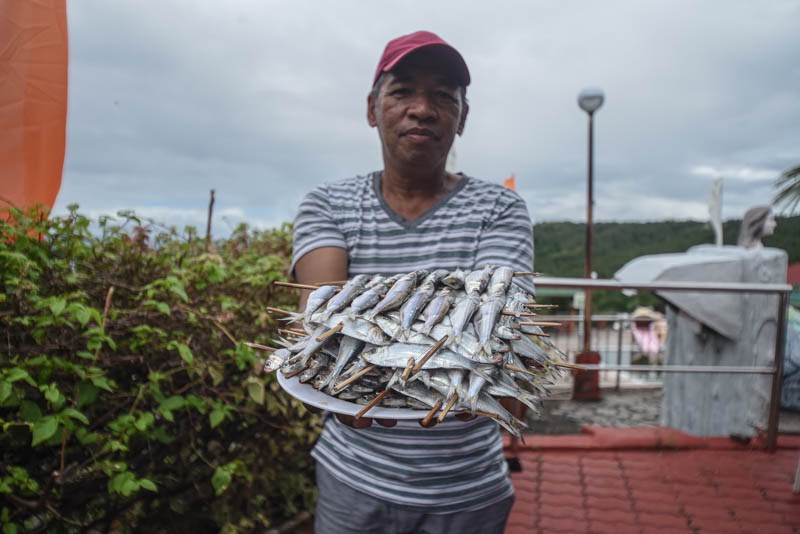
Some stakeholders of the lake, however, had doubts on the assessment of IUCN.
Rogelio Mendoza, a fisherman from Talisay town, refuses to believe that tawilis is indeed endangered, saying the fish species continues to be abundant in Taal Lake.
“We were surprised when it was announced that tawilis is endangered. [Those who made the study] should come here in the months of May, June and until September and you will see heaps of tawilis,” he said.
For the 69-year-old Mendoza, who was able to send his children to school thanks to fishing, he fears the declaration would mean a loss of livelihood for tawilis fishers.
Daniel Reyes, mayor of Agoncillo town, described the findings of the IUCN as “questionable.”
In its assessment, the IUCN said it is inferred the population of tawilis has declined by at least 50% over the past 10 years, which qualifies it as endangered.
“It fits all the parameters for being declared as endangered: its endemicity to a single locality and even the size of the only lake where it is found. Plus, the threats it has been facing in the past 20, 30 years,” Papa explained.
Mutia said the doubts that some of the stakeholders have on the IUCN assessment are rooted in the misconception that being endangered is equivalent to being extinct.
Despite various regulations, some fishermen still violated the closed season. There are also others who are still using beach seine and motorized push nets, both prohibited fishing gear.
The NFRDI attributed this to lack of access to proper information and the insufficient support of local government to tawilis fishermen.
“Compliance is hard because they’re not aware. One of the most important things that we have to focus on is the awareness campaign for the people, especially for fisherfolk, communities, in the area,” Mutia said.
Twin disasters: Taal, COVID-19
In January, Taal Volcano, one of the country’s most active, suddenly erupted after 42 years. It belched out ash that covered vast swathes of the province and triggered a series of earthquakes.
At the time, people were worried that a bigger explosion would lead to the decimation of the freshwater sardine.
Fortunately, the eruption had “no apparent impact” on the population of tawilis, the NFRDI said. But there were “several unfavorable effects” on fishermen and fishing activities in both capture and aquaculture sectors on the lake.
Ashfall and rocky debris from the volcano’s steam-driven eruption damaged 40% of the 6,000 fish cages along the lake, the Philippine Daily Inquirer reported, disrupting the harvest of bangus and tilapia at the time.
When fishing activities resumed after the alert status of the volcano was lowered, the majority of the catches then were tilapia that had escaped from fish cages.
More than a month after the volcanic eruption, coronavirus cases began to rise, prompting the national government to place the country under lockdown.
Mabel Orense, secretary of a local fishers group, said the strict lockdown hindered the movement of fisheries products. With most people stuck inside their homes, demand also went down.
“Only a few were fishing during the height of the lockdown in March. If they were fishing, it was mainly for subsistence,” she said. Batangas remains one of the provinces under general community quarantine but movement restrictions have since eased gradually.
The restrictions that came with the pandemic also crippled the law enforcement efforts of the protected area managers. The TVPL PAMO said patrolling was limited due to the new work arrangement of personnel, while the monitoring of tawilis sanctuaries was discontinued.
Saving the lake
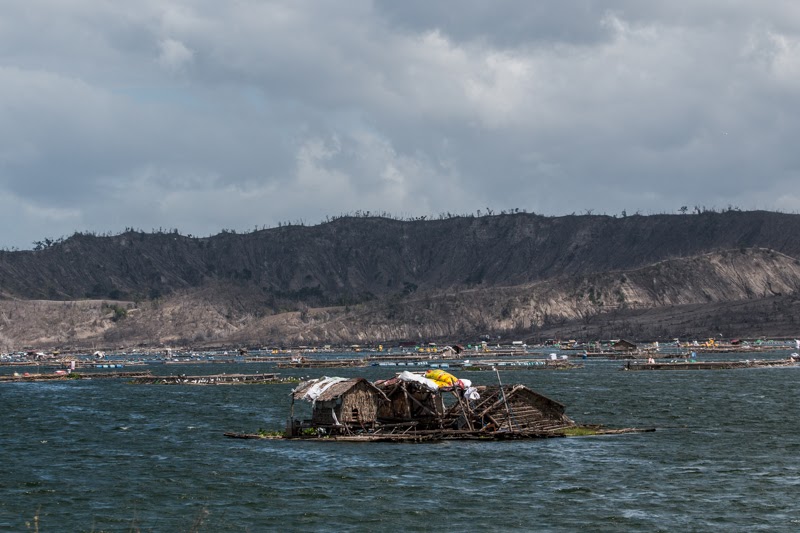
Properly managing the 23,366-hectare Taal Lake—the third largest in the country—also plays a critical part in conserving the freshwater sardine.
The lake is part of the Taal Volcano Protected Landscape, a protected area under Proclamation 923 signed by President Fidel Ramos in 1996.
Taal Volcano Island, the 37 tributaries of 13 municipalities and three cities in the provinces of Batangas and Cavite, and a portion of Pansipit River also form part of the Taal Landscape area.
TVPL is managed by the Protected Area Management Board (PAMB), which is composed of heads of government agencies and local chief executives.
The establishment of the protected landscape was meant to protect and conserve the ecological, biological, scientific, educational and recreation features of the area. But being a protected area did not prevent the lake from being beset by pollution from aquaculture facilities and domestic waste.
Aside from measures to conserve tawilis, efforts should also focus on nutrient management strategies to restore water quality of the lake, Papa stressed. Nutrient management is meant to keep levels of phosphates and nitrogen from agricultural and industrial activities from exceeding safety standards.
“If you really show concern for tawilis, you really have to show concern for the lake,” Papa said.
“Most of the things that [resulted in] population decline or the dwindling of its size are related to the quality of the lake, not necessarily just to the consumption or catching of tawilis in the lake itself,” he added.
Noel Recillo, Batangas provincial environment and natural resources officer and the concurrent TVPL Protected Area superintendent, said the agency regularly conducts monitoring of the lake’s quality. The agency is also keeping track of agricultural facilities around the lake such as piggeries, whose waste drains into the lake.
Recillo said that at present, tests suggest that the lake’s water quality has gradually improved.
The problem with fish cages
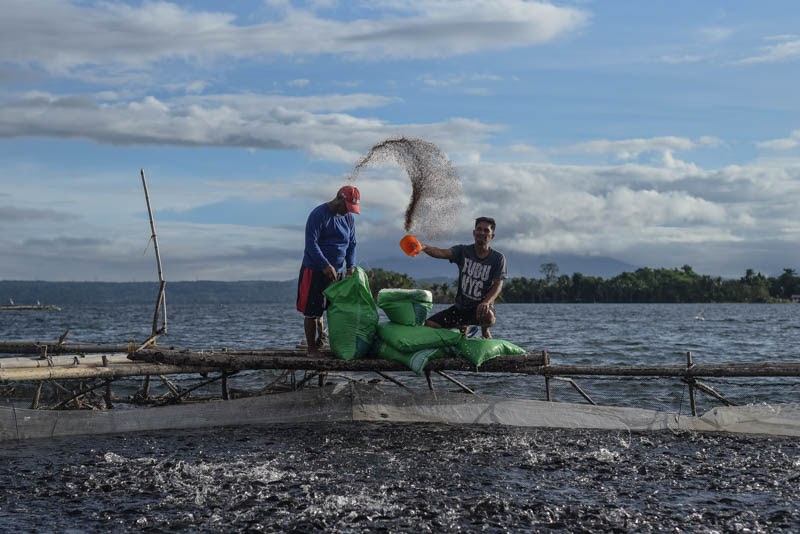
The multibillion-peso aquaculture sector is the major contributor of pollution in Taal Lake.
According to the Asian Development Bank, tilapia cage farming in the lake started in the 1970s, motivated by the rapid development of fish cage and pen culture in Laguna de Bay, the largest lake in the Philippines.
Orense lamented that their former fishing grounds had been converted into fish cages, cutting down the areas where they could drop their nets to fish.
More than the loss of fishing grounds, the fish cages in the lake have caused habitat destruction, hampered the movement of tawilis, and contributed to the decline of water quality in the lake, scientists said.
“Aquaculture played a role in the decline of water quality in the lake and diminished the conduct of [tawilis’] day-to-day living,” Papa said.
Competition as well as predation by bangus and tilapia are also likely.
Under the Fisheries Code, only 10% of the water surface area of lakes and rivers may be allotted for aquaculture purposes. In the case of Taal Lake, the carrying capacity should be only 2,336 hectares.
PAMO-TVPL said around 6,000 fish cages are operating on the lake, with 14,000 and 50,000 pieces stocking density for bangus and tilapia, respectively. Recillo, the protected area superintendent, said the fish cages are still within the lake’s carrying capacity.
The NFRDI will conduct its own research and development project on the carrying capacity of Taal Lake for aquaculture production in 2021 to provide a policy recommendation on the number of cages that can be allowed to achieve sustainable production.
To reduce the pollution caused by sinking and slow-sinking feeds, the research institute is also recommending the use of extruded floating feeds in aquaculture facilities. It said the extruded floating feeds have “comparative advantage” in terms of volume of harvest, feed cost, profitability, market value and organic loading in the lake.
Reserve areas and fisherfolk initiatives
PAMB, the policymaking body of TVPL, adopted a resolution establishing Tawilis Reserve Areas in the lake vicinities of the towns of Balete, Mataasnakahoy, Cuenca and San Nicolas in Batangas.
Fishing activities targeting tawilis are not allowed in these areas, which cover a total of 1,106.58 hectares.
In hopes to delist the species from the IUCN “red list,” the NFRDI and BFAR are conducting experimental breeding trials of tawilis.
To address the threats of invasive species, the NFRDI will help in the formulation of a policy recommendation to control and mitigate the proliferation of invasive species in the country’s inland waters.
Small-scale fisherfolk are also doing their part to ensure the sustainability of tawilis.
Starting next year, the Kilusan ng mga Maliliit na Mangingisda sa Lawa ng Taal, a federation of small fishermen operating in the lake, will now manage the tawilis catch of fishers.
Mabel Orense, secretary of the KMMLT, explained the federation will buy the fishers’ catch and sell them to suppliers and vendors. This is to ensure the fish that will be sold were caught using gill nets, not illegal fishing gear.
She added that those found violating the closed fishing season will be ineligible to receive benefits from the federation.
Rehabilitation as last resort
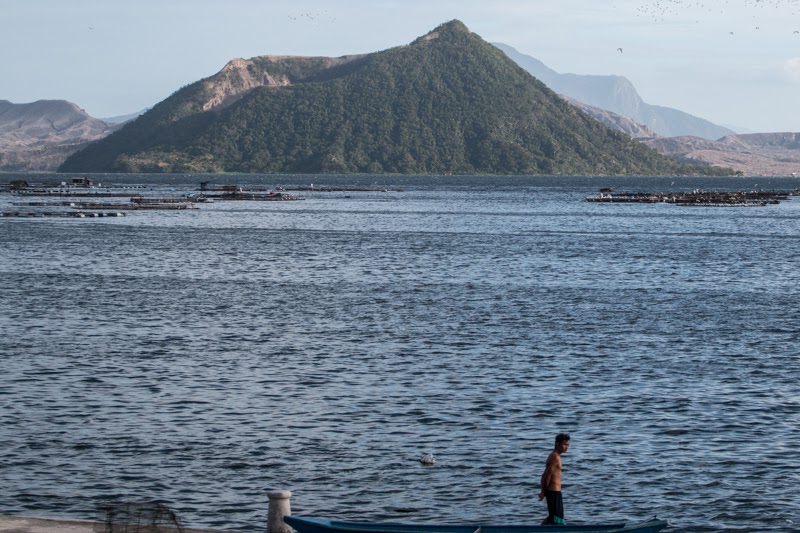
If the water quality of Taal Lake continues to deteriorate, the managers of TVPL may consider rehabilitating Taal Lake on the same scale as the restoration of Boracay Island and Manila Bay, both victims of man-made environmental degradation.
The drastic measure, however, will be the “last resort.”
A task force called “Sagip Lawa” (Save the Lake) was recently established, Mayor Reyes said. Its main objectives are cleaning the lake and dismantling abandoned and illegal fish cages.
“For as long as we save Taal Lake, we will conserve not only tawilis but also all of the fisheries resources in the lake,” Jasmin Andaya, assistant protected area superintendent, said.
Papa pointed out that conservation measures and restoration efforts must be implemented properly to better manage the status of tawilis. Doing that will help ensure that tawilis will be available for a longer period of time and fisherfolk like Orense and Reyes will have a source of livelihood.
“It’s not a question of not consuming or catching it. It’s managing the stocks properly so that it will be enjoyed well into the future by future generations,” he said.
It is possible that tawilis may be removed from IUCN’s “red list” in 10 years, Mutia said. But that can only happen if the decades-old problem of unsustainable fishing is resolved.
The policymaking board is currently revising its TVPL management plan, in which they will incorporate measures to address the problems of overfishing, pollution and proliferation of invasive species.
For now, aside from conservation measures currently in place, the NFRDI is also focusing on its information dissemination campaign targeting fisherfolk to attain high compliance to initiatives by the government.
“I tell them (fisherfolk) that you are the resource managers. You are responsible for the resources in your community so if the resources disappear, you will lose your source of livelihood,” Mutia said.
Reporting for this story was made possible through support from Internews’ Earth Journalism Network.
- Latest
- Trending
















